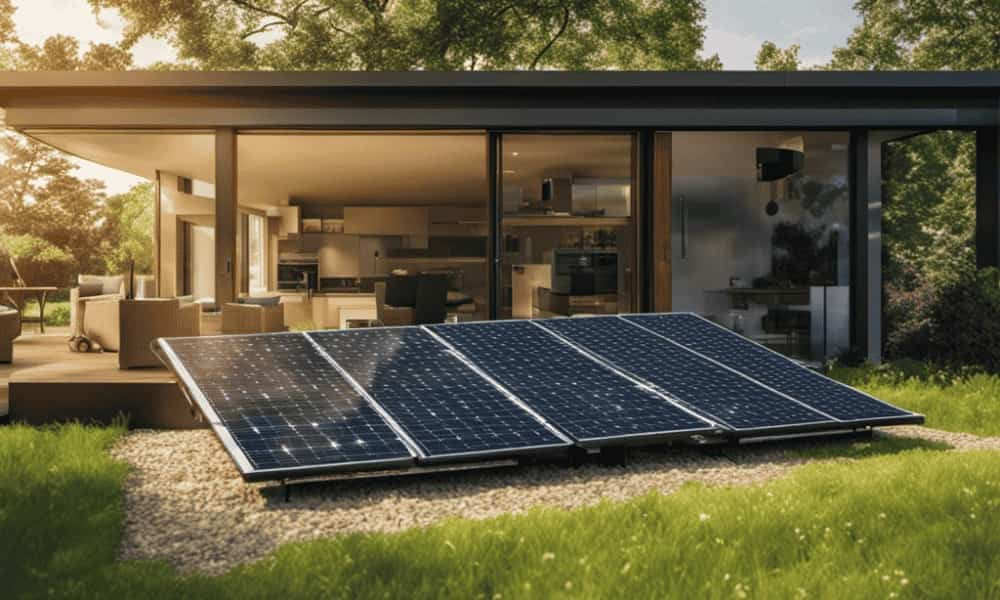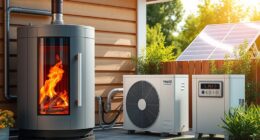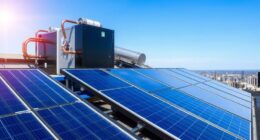Are you ready to delve into the fascinating world of enhancing thermal energy transfer in heat pumps?
We, the experts in this field, invite you to join us on a journey of discovery and innovation.
In this article, we will explore the importance of efficient energy transfer, understand the basics of heat transfer, and evaluate key factors affecting thermal energy transfer.
Together, we will uncover strategies to enhance heat pump efficiency, maximize energy transfer, and overcome challenges.
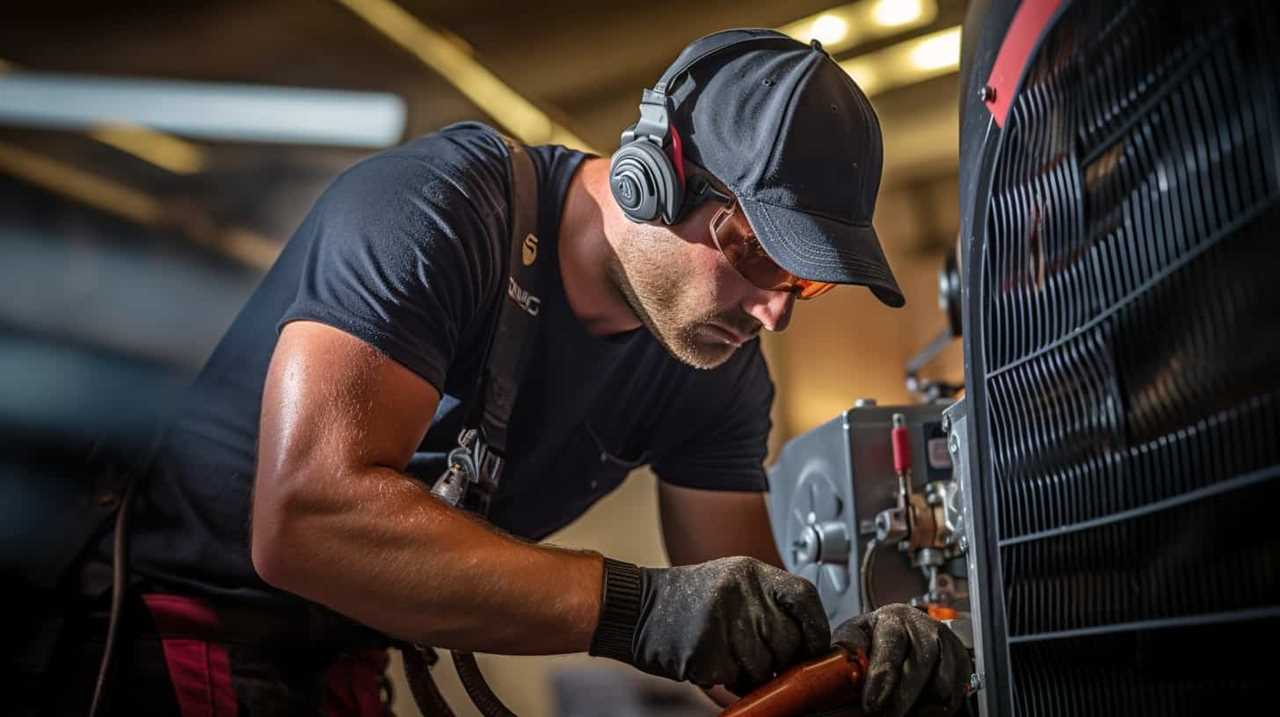
Let’s embark on this exciting endeavor to serve you better.
Key Takeaways
- Efficient thermal energy transfer is crucial for maximizing the coefficient of performance (COP) of heat pumps.
- Heat exchanger design and size significantly impact heat transfer efficiency.
- Proper insulation minimizes heat loss and ensures effective thermal energy transfer.
- Material selection with high thermal conductivity, such as copper, aluminum, and stainless steel, ensures efficient heat transfer.
The Importance of Efficient Thermal Energy Transfer in Heat Pumps
We believe that efficient thermal energy transfer is crucial for the optimal performance of heat pumps. The ability to transfer heat effectively ensures that the system operates at the optimal temperature, maximizing its coefficient of performance. The coefficient of performance (COP) is a measure of the efficiency of a heat pump, representing the ratio of the amount of heat transferred to the amount of work input.
By improving thermal energy transfer, we can enhance the overall performance of heat pumps, making them more energy-efficient and cost-effective for our customers. Understanding the basics of heat transfer in heat pumps is essential for achieving this goal. By comprehending the principles behind heat transfer mechanisms, we can develop strategies to enhance efficiency and effectiveness in thermal energy transfer.
Now, let’s delve into the next section, where we’ll discuss the fundamentals of heat transfer in heat pumps.
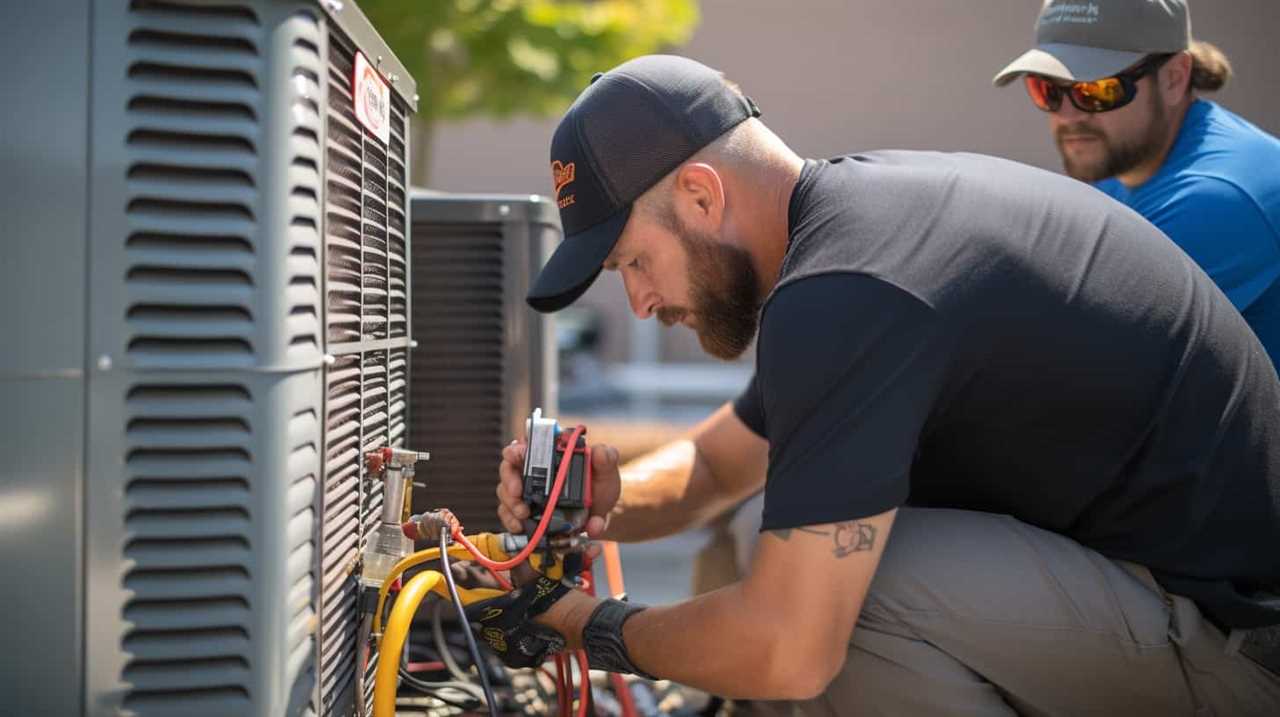
Understanding the Basics of Heat Transfer in Heat Pumps
Let’s start by exploring the fundamentals of heat transfer in heat pumps. Understanding the basics of heat transfer is crucial to grasp the overall operation and efficiency of heat pumps.
Here are a few key points to consider:
-
Basics of heat pump operation:
-
Heat pumps work by transferring heat from a lower temperature source to a higher temperature sink.

-
They utilize refrigerants to absorb and release heat energy during the heating and cooling cycles.
-
Heat pump efficiency factors:
-
Coefficient of Performance (COP) measures the ratio of heat output to the amount of electrical energy input.
-
Heat exchanger design and size greatly impact the efficiency of heat transfer.
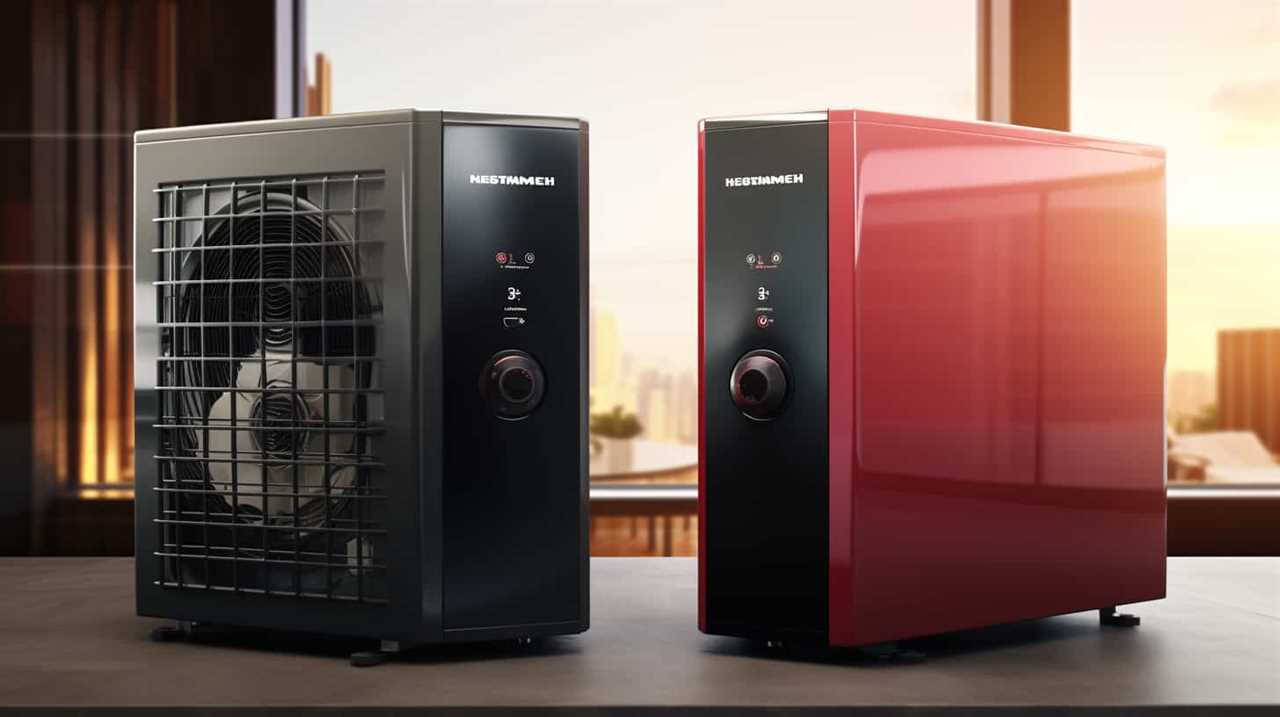
By comprehending the basics of heat transfer and the factors influencing heat pump efficiency, we can ensure optimal performance and energy savings.
Understanding these principles is essential in serving others by providing effective heat pump solutions.
Key Factors Affecting Thermal Energy Transfer in Heat Pumps
To optimize thermal energy transfer in heat pumps, it’s important to consider key factors such as heat exchanger design, refrigerant properties, and airflow management. These factors play a crucial role in the overall performance and efficiency of a heat pump system.
Evaluating insulation materials is essential in minimizing heat loss and ensuring effective thermal energy transfer. Proper insulation helps maintain the desired temperature within the heat pump system, reducing the need for excessive energy consumption.

Analyzing heat pump performance is also crucial in identifying any inefficiencies or areas for improvement. By monitoring factors such as COP (Coefficient of Performance) and heat output, one can assess the effectiveness of the thermal energy transfer process.
In the subsequent section, we’ll dive deeper into evaluating heat exchanger design for enhanced energy transfer.
Evaluating Heat Exchanger Design for Enhanced Energy Transfer
When evaluating heat exchanger design for enhanced energy transfer, there are three key points to consider:
-
Optimal fluid flow: This ensures efficient heat transfer by minimizing resistance and maximizing contact with the heat transfer surfaces.
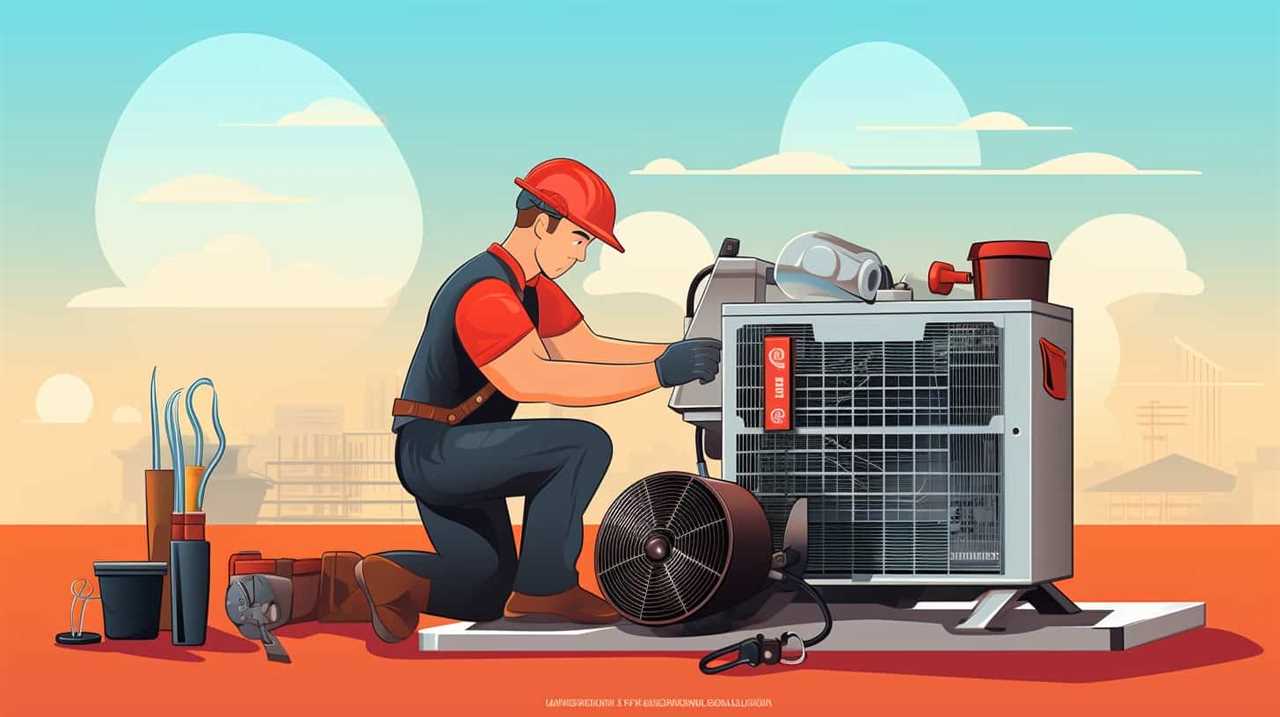
-
Material conductivity effects: These play a crucial role in determining how effectively heat is transferred between the fluids.
-
Surface area optimization: This involves maximizing the available surface area for heat transfer, which can be achieved through design modifications and using materials with high surface area-to-volume ratios.
Optimal Fluid Flow
We can evaluate the design of the heat exchanger to enhance energy transfer by optimizing the fluid flow. Fluid dynamics plays a crucial role in heat transfer optimization, and understanding how the fluid moves within the heat exchanger can lead to significant improvements in efficiency. Here are two key factors to consider when evaluating fluid flow:
-
Flow rate: By adjusting the flow rate of the fluid, we can control the speed at which heat is transferred. Finding the optimal flow rate ensures maximum thermal energy transfer.
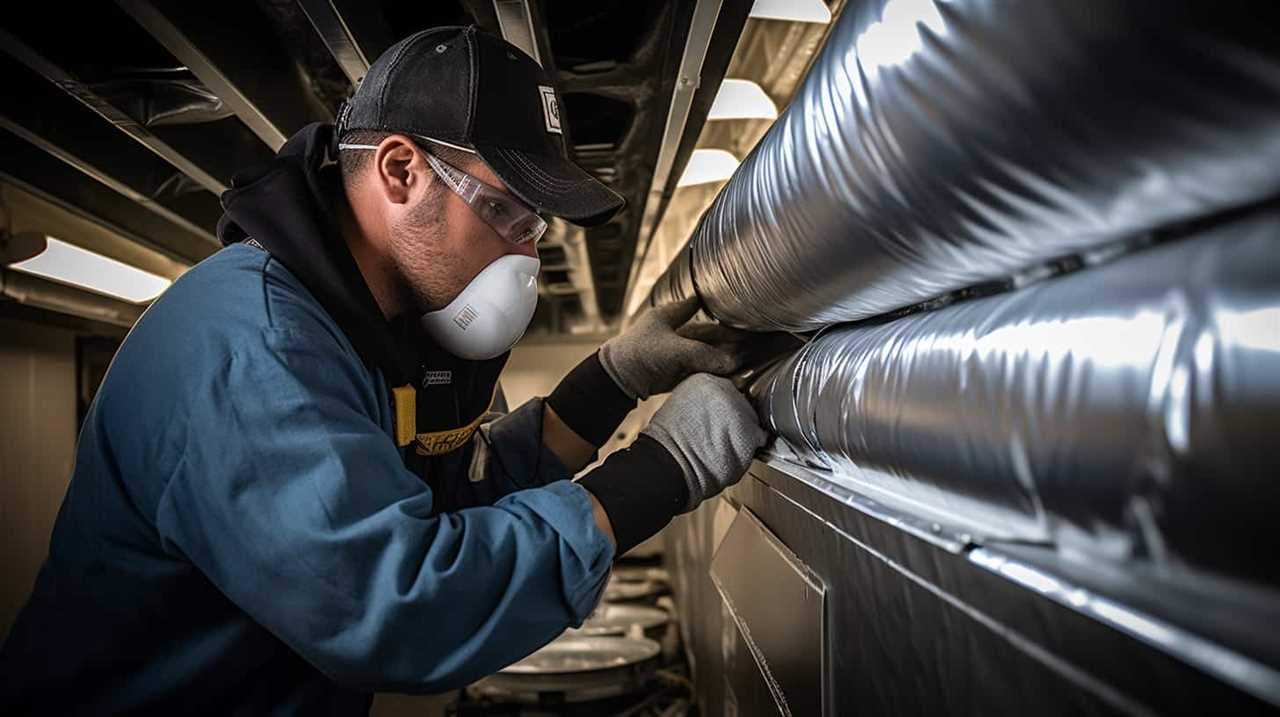
-
Turbulence: Creating controlled turbulence within the heat exchanger promotes better mixing and enhances heat transfer. By carefully designing the geometry of the heat exchanger, we can induce turbulence and increase the overall efficiency.
Material Conductivity Effects
Our understanding of material conductivity effects allows us to evaluate heat exchanger design for enhanced energy transfer. When designing a heat exchanger, careful consideration must be given to the selection of materials with high thermal conductivity. This ensures efficient heat transfer and maximizes the performance of the heat pump system.
To optimize thermal conductivity, it is important to choose materials that have high thermal conductivity values. Common materials used in heat exchangers include copper, aluminum, and stainless steel, as they exhibit excellent thermal conductivity properties. By selecting the right material, we can minimize thermal resistance and improve the overall efficiency of the heat transfer process.
In order to compare the thermal conductivity of different materials, we can use the following table:
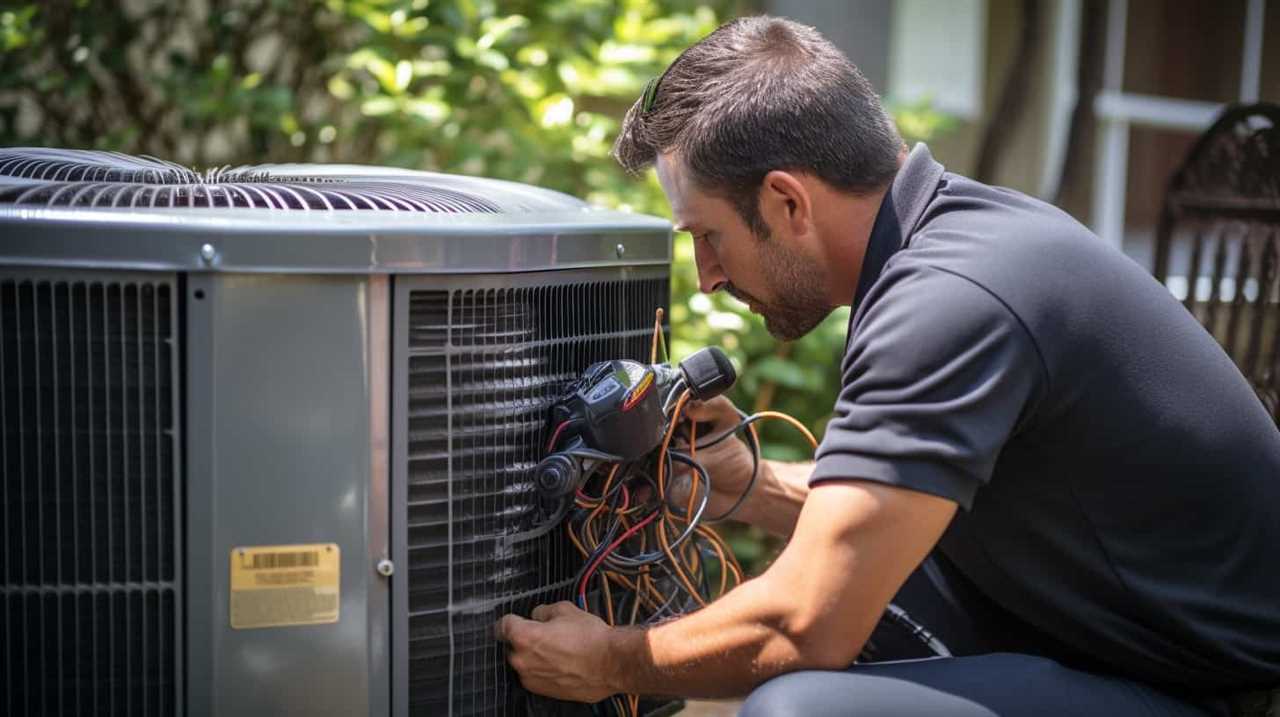
| Material | Thermal Conductivity (W/mK) |
|---|---|
| Copper | 401 |
| Aluminum | 237 |
| Stainless Steel | 16 |
| Brass | 109 |
| Titanium | 21 |
Surface Area Optimization
To maximize energy transfer, we frequently evaluate heat exchanger design and optimize surface area. Surface area optimization plays a crucial role in enhancing heat transfer efficiency. By carefully designing the shape and arrangement of the heat exchanger’s surfaces, we can increase the available surface area for heat exchange, leading to improved thermal energy transfer.
Here are two key considerations for surface area optimization:
-
Increasing the number of fins: Adding more fins to the heat exchanger increases the surface area available for heat transfer. This allows for a larger contact area between the working fluid and the surrounding medium, facilitating more efficient heat exchange.
-
Enhancing surface roughness: Increasing the roughness of the heat exchanger’s surfaces can improve heat transfer by promoting turbulent flow and disrupting the thermal boundary layer. This disrupts the formation of stagnant air or fluid pockets, ensuring better contact between the working fluid and the heat exchanger, and enhancing heat transfer.

Enhancing Heat Pump Efficiency Through Improved Insulation
Improved insulation is key to enhancing the efficiency of heat pumps.
By implementing improved insulation techniques, heat pumps can minimize heat loss and improve overall performance. One effective method is to use high-quality insulation materials with low thermal conductivity. These materials, such as fiberglass or polyurethane foam, can significantly reduce heat transfer between the surroundings and the heat pump system.
Additionally, proper insulation installation is crucial to avoid air leakage, which can compromise the system’s efficiency.
Another way to enhance heat pump efficiency is by considering alternative refrigerant options. Some refrigerants, such as HFCs, have a high global warming potential and are being phased out due to environmental concerns. By switching to low-GWP refrigerants like hydrofluoroolefins or hydrofluoroethers, heat pumps can reduce their environmental impact while maintaining high efficiency.

Optimizing Refrigerant Flow for Better Thermal Energy Transfer
When considering the optimization of refrigerant flow for better thermal energy transfer in a heat pump, there are three key points that need to be addressed.
First, the flow rate impact on the overall efficiency of the system should be analyzed, as it directly affects the heat transfer rate.
Second, the design of the heat exchanger plays a crucial role in ensuring efficient heat transfer between the refrigerant and the working fluid.
Finally, reducing pressure drops within the system can significantly enhance thermal energy transfer by minimizing energy losses.

Flow Rate Impact
As we explore the impact of flow rate on thermal energy transfer in heat pumps, it becomes evident that optimizing refrigerant flow is crucial. Flow rate optimization plays a significant role in enhancing the overall efficiency and performance of heat pumps.
Here are two key factors to consider when optimizing refrigerant flow:
-
Flow rate optimization: Adjusting the flow rate of the refrigerant can help maximize the heat transfer capabilities of the heat pump. By finding the optimal flow rate, we can ensure that the refrigerant is flowing at a rate that promotes efficient heat exchange.
-
Impact of fluid viscosity: The viscosity of the refrigerant affects its flow characteristics. Higher viscosity can result in increased resistance to flow, leading to reduced heat transfer efficiency. By understanding the impact of fluid viscosity, we can select the most suitable refrigerant and adjust flow rates accordingly.

Heat Exchanger Design
To optimize thermal energy transfer, we focus on designing a heat exchanger that maximizes refrigerant flow efficiency. One crucial aspect to consider in heat exchanger design is fluid dynamics. By understanding how the refrigerant flows within the exchanger, we can enhance its performance.
The flow rate, pressure drop, and velocity distribution are key parameters in determining the heat transfer efficiency. Additionally, the choice of heat exchanger materials plays a vital role in achieving optimal thermal energy transfer. The materials should have high thermal conductivity to ensure efficient heat transfer between the refrigerant and the surrounding environment. Corrosion resistance is also crucial to maintain the longevity of the heat exchanger.
Pressure Drop Reduction
We frequently strive to optimize the flow of refrigerant in order to reduce pressure drop and enhance thermal energy transfer in the heat pump system. Pressure drop analysis plays a crucial role in improving the efficiency of heat pump operations. By understanding the factors that contribute to pressure drop, we can make informed decisions to minimize it.
One effective approach is flow rate optimization, where we adjust the refrigerant flow to achieve a balance between pressure drop reduction and thermal energy transfer. This involves careful consideration of the heat exchanger design, pipe diameter, and refrigerant properties. Additionally, we can implement advanced control strategies to dynamically adjust the flow rate based on real-time system conditions.
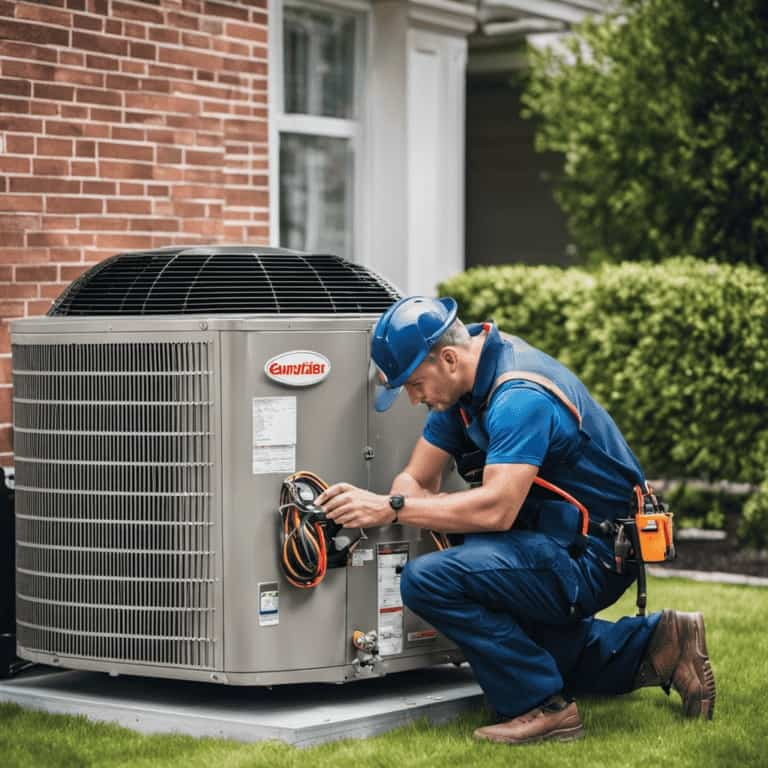
By reducing pressure drop, we can significantly improve the overall performance and energy efficiency of heat pump systems.
In the next section, we’ll explore the potential of using advanced heat transfer fluids to further enhance the thermal energy transfer capabilities of heat pumps.
Exploring Advanced Heat Transfer Fluids for Heat Pumps
While researching ways to enhance the thermal energy transfer of heat pumps, we’re exploring advanced heat transfer fluids. These fluids possess advanced fluid properties that can significantly improve the heat transfer efficiency of heat pumps.
Through experimental heat transfer analysis, we can evaluate the performance of these fluids under different operating conditions. By analyzing the heat transfer coefficients and pressure drop characteristics, we can determine the most suitable heat transfer fluid for heat pumps.

These advanced fluids have the potential to enhance heat pump performance, leading to greater energy efficiency and cost savings.
Transitioning into the subsequent section about utilizing heat recovery systems to maximize energy transfer, it’s important to consider how the choice of heat transfer fluid can impact the overall effectiveness of these systems.
Utilizing Heat Recovery Systems to Maximize Energy Transfer
By implementing heat recovery systems, we can maximize the transfer of energy in heat pumps. Heat recovery efficiency plays a crucial role in improving heat pump performance. Here are two key considerations for utilizing heat recovery systems:
-
Optimizing heat exchanger design: Proper design of the heat exchanger can enhance heat recovery efficiency by maximizing heat transfer between the different fluid streams. Factors like surface area, flow rates, and temperature differentials must be carefully considered to ensure efficient energy transfer.
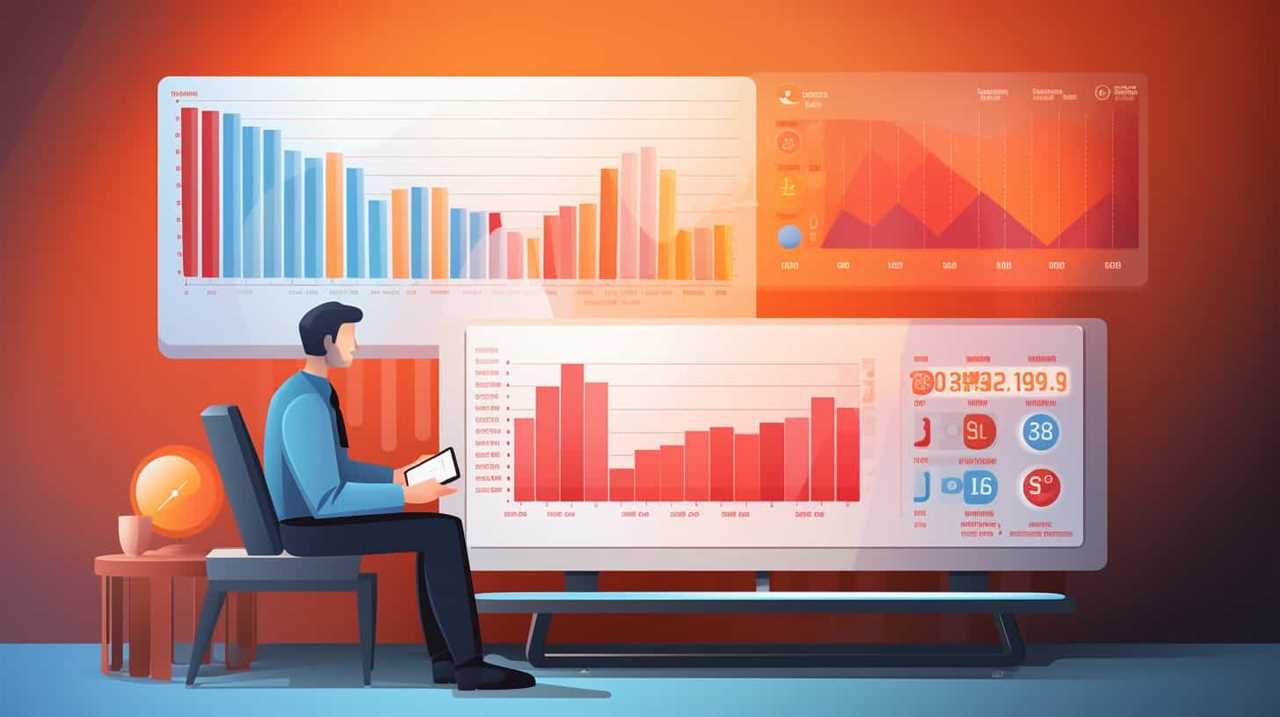
-
Utilizing waste heat: Heat recovery systems can be utilized to capture and utilize waste heat from various sources, such as exhaust air or condensation. By channeling this waste heat back into the heat pump system, overall energy efficiency can be significantly improved.
The Role of Compressor Technology in Enhancing Thermal Energy Transfer
To enhance thermal energy transfer in heat pumps, we can utilize advanced compressor technology and optimize its efficiency. The compressor plays a crucial role in the heat pump system by compressing the refrigerant and increasing its temperature and pressure. By improving the efficiency of the compressor, we can enhance the overall performance of the heat pump and maximize thermal energy transfer.
One way to achieve this is through innovative compressor designs that focus on improving compressor efficiency. These designs can include features such as variable speed technology, which allows the compressor to adjust its speed based on the heating or cooling demand. This not only increases the efficiency but also reduces energy consumption. Additionally, advanced compressor technologies, such as scroll compressors or twin-screw compressors, can offer improved performance and reliability compared to traditional reciprocating compressors.
In summary, by investing in compressor technology and exploring innovative designs, we can enhance the thermal energy transfer in heat pumps, resulting in improved efficiency and greater energy savings.
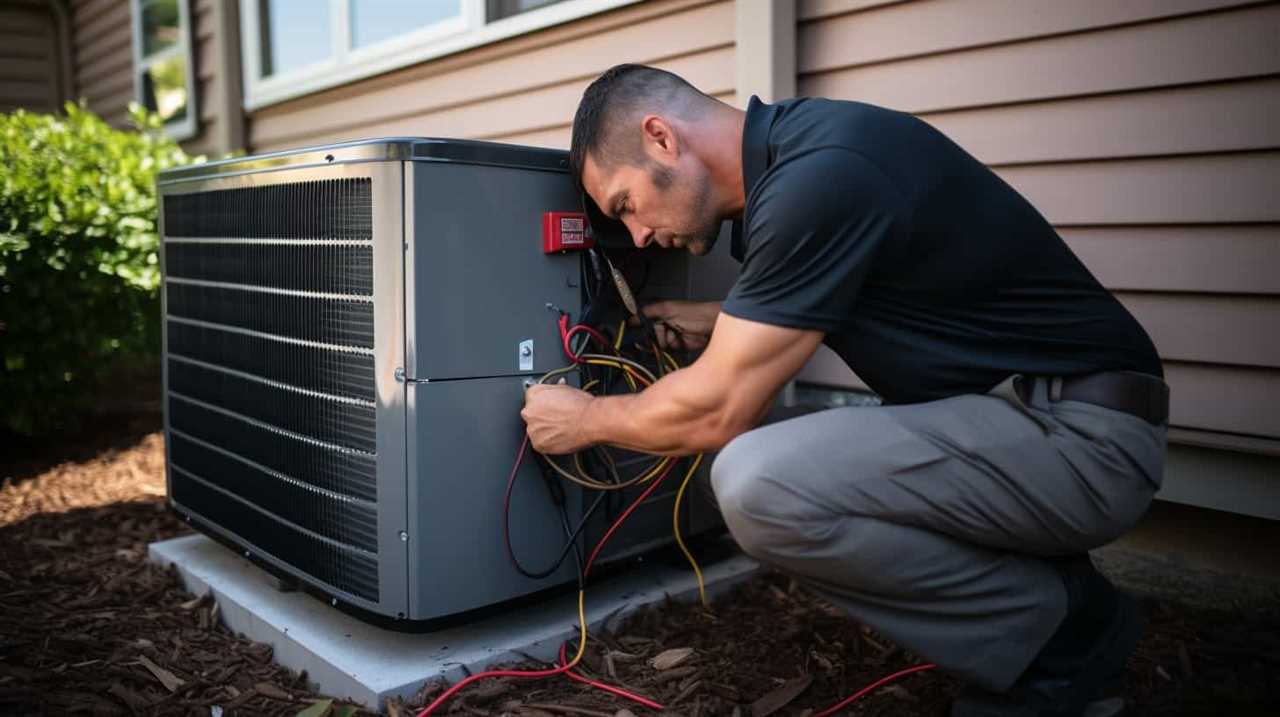
| Compressor Efficiency | Innovative Compressor Designs |
|---|---|
| Variable speed technology | Scroll compressors |
| Advanced compressor technologies | Twin-screw compressors |
Overcoming Challenges in Heat Pump Sizing for Efficient Energy Transfer
We can address the challenges in heat pump sizing by implementing accurate calculations and utilizing appropriate guidelines for efficient energy transfer. Overcoming heat pump sizing challenges is crucial for achieving optimal performance and energy efficiency.
Here are two key strategies to consider:
- Conduct thorough load calculations:
- Accurately determine the heating and cooling requirements of the space to be conditioned.
- Consider factors such as insulation levels, occupancy, and climate conditions to calculate the precise load.
- Size the heat pump correctly:
- Avoid oversizing, as it can lead to inefficient operation and higher energy consumption.
- Take into account the heat pump’s performance at different operating conditions to ensure proper sizing.
Exploring Future Innovations for Enhanced Thermal Energy Transfer in Heat Pumps
Our industry is constantly seeking new innovations to enhance thermal energy transfer in heat pumps. As we look towards the future, there are several advancements that hold promise in this area.
One such advancement is the application of nanofluids in heat pumps. Nanofluids are colloidal suspensions of nanoparticles in a base fluid, which exhibit enhanced thermal conductivity compared to traditional fluids.
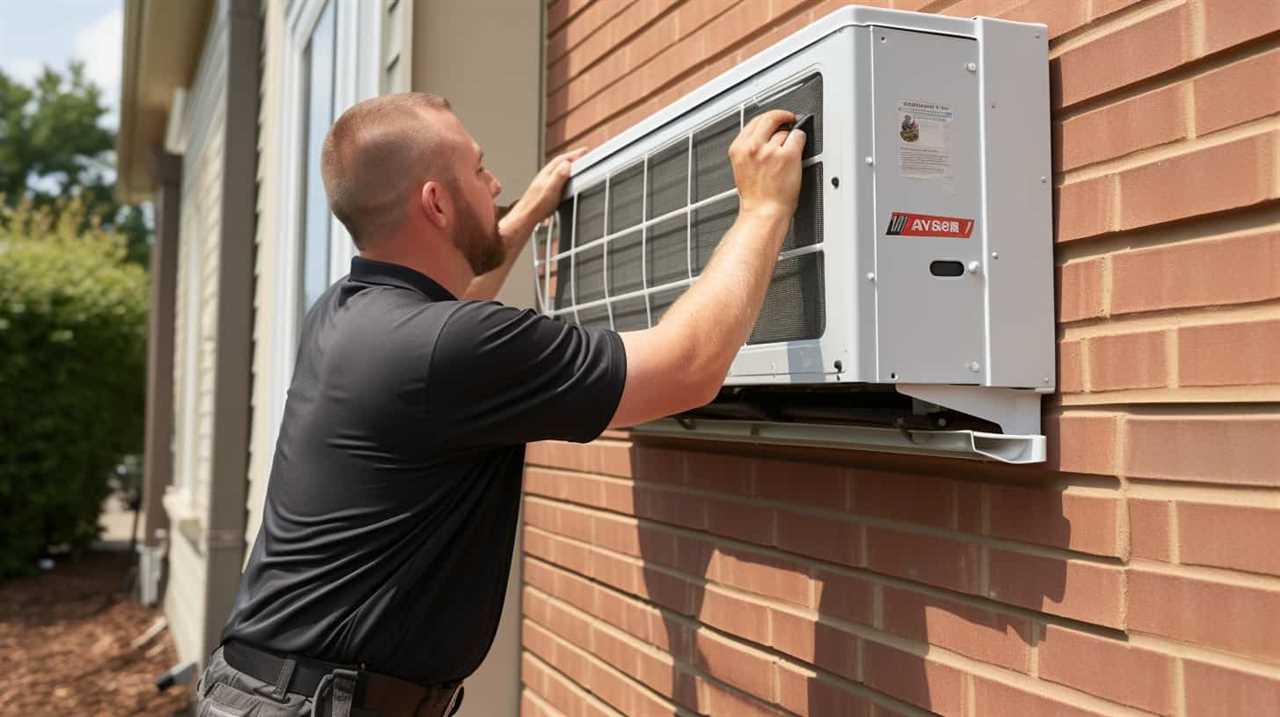
By incorporating nanofluids into heat pump systems, we can improve the efficiency of heat transfer and ultimately enhance the performance of heat pumps. The use of nanofluids can also lead to compact designs and reduced energy consumption, making them an attractive option for future heat pump applications.
Continued research and development in nanofluids’ applications will pave the way for even greater advancements in thermal energy transfer in heat pumps.
Frequently Asked Questions
What Are the Benefits of Efficient Thermal Energy Transfer in Heat Pumps?
Efficient thermal energy transfer in heat pumps offers numerous benefits. It improves system performance, increases energy efficiency, reduces operating costs, and minimizes environmental impact. The importance of this cannot be overstated.
How Does Heat Transfer Work in Heat Pumps?
Heat pump technology utilizes heat transfer mechanics to efficiently transfer thermal energy. Understanding how heat transfer works in heat pumps is crucial for optimizing their performance and enhancing thermal energy transfer.
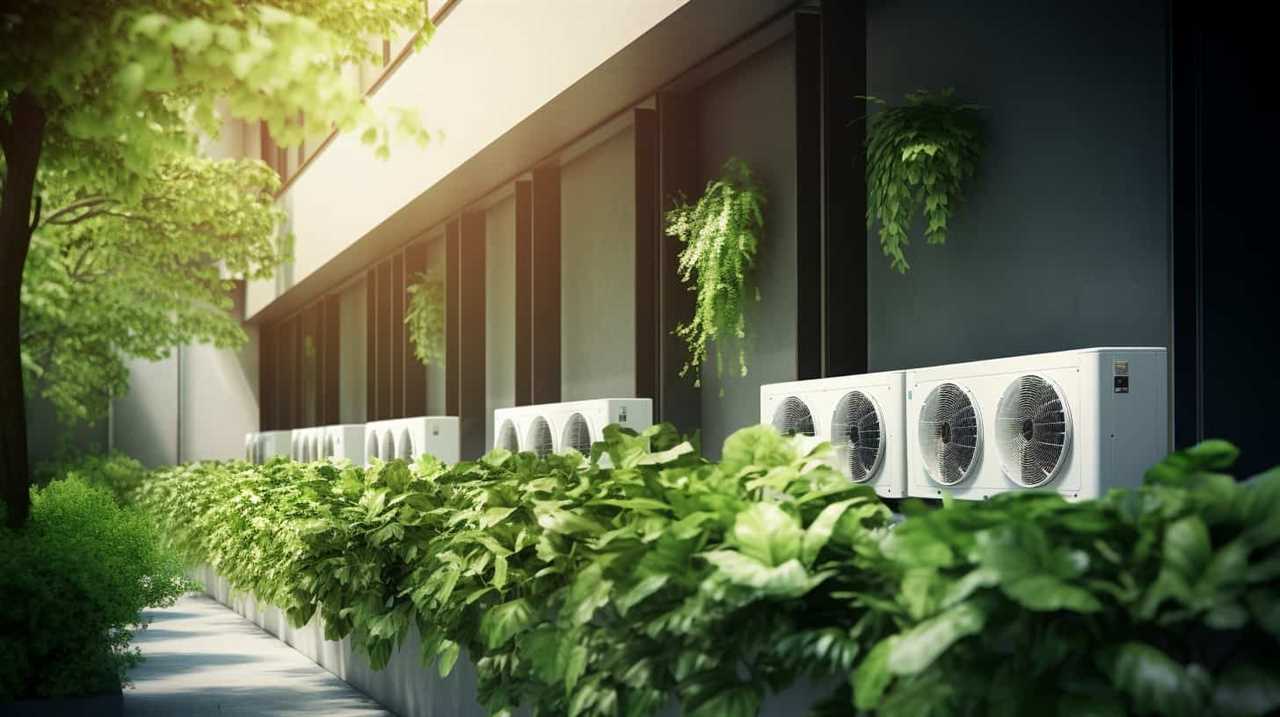
What Are the Key Factors That Can Affect Thermal Energy Transfer in Heat Pumps?
Factors that can affect thermal energy transfer in heat pumps include temperature difference, heat exchanger design, refrigerant properties, and system maintenance. Improving these factors can enhance the efficiency of heat pump operations.
How Can Heat Exchanger Design Enhance Energy Transfer in Heat Pumps?
To optimize heat exchanger design and improve heat pump efficiency, we must focus on enhancing thermal energy transfer. By analyzing key factors and implementing innovative designs, we can achieve significant improvements in performance and ultimately serve others better.
What Are Some Future Innovations Being Explored to Enhance Thermal Energy Transfer in Heat Pumps?
Smart control and the use of nanofluids are being explored as future innovations to enhance thermal energy transfer in heat pumps. These advancements have the potential to improve efficiency and optimize performance, ultimately serving others by providing more efficient heating and cooling solutions.
Conclusion
In conclusion, optimizing thermal energy transfer in heat pumps is crucial for achieving greater efficiency.

By understanding the fundamentals of heat transfer, considering factors such as heat exchanger design and insulation improvements, and utilizing innovative technologies like heat recovery systems and advanced compressors, we can enhance energy transfer and maximize the performance of heat pumps.
Like a symphony conductor harmonizing various instruments, these enhancements orchestrate a seamless flow of thermal energy, resulting in a highly efficient heat pump system.



